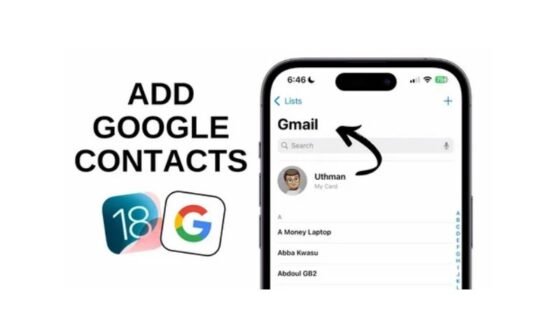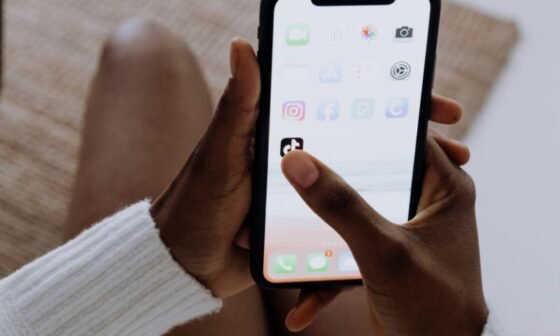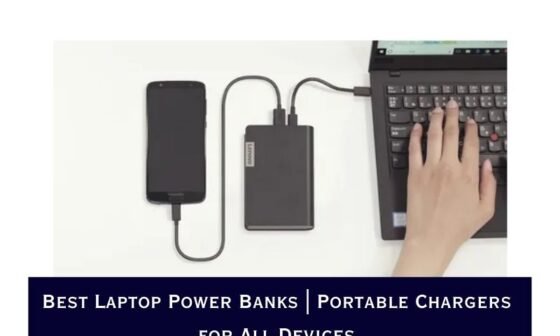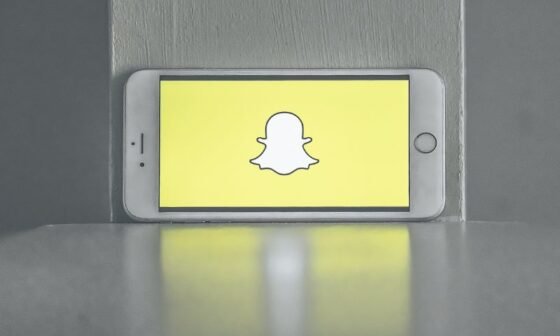With the rise of smartphones, cameras embedded in these devices have evolved rapidly, making them a pivotal selling point for many users. As of 2025, smartphone cameras have reached incredible heights, incorporating advanced features like computational photography, AI-enhanced modes, and professional-grade lenses. Whether you’re a photography enthusiast, a social media influencer, or simply someone who loves to capture memories, having a smartphone with an excellent camera is key.
This guide covers the best camera phones of 2025, providing detailed insights into their features, camera capabilities, and what makes each a top contender.
1. Samsung Galaxy S24 Ultra
Samsung continues to dominate the camera phone market with its Samsung Galaxy S24 Ultra, often hailed as the best camera phone for 2025.

Key Features:
- 200 MP main sensor: The S24 Ultra boasts an ultra-high resolution 200 MP camera that captures stunning detail.
- Periscope zoom: Capable of an impressive 10x optical zoom and 100x digital zoom, it allows users to get closer to distant subjects.
- Nightography: Samsung has significantly improved low-light photography, allowing the camera to capture more detail and colour even in poorly lit environments.
- 8K video recording: For video enthusiasts, the S24 Ultra supports 8K recording, ensuring ultra-high resolution footage.
Why it’s a contender:
The combination of Samsung’s hardware and software makes this device the perfect tool for professionals and hobbyists alike. Its versatility and advanced computational photography allow for stunning images in almost any situation, making it a top recommendation for those who prioritise camera quality in their smartphones.
2. Google Pixel 9 Pro
Google’s Pixel series continues to shine due to its focus on computational photography. The Google Pixel 9 Pro is no exception, offering features that make it one of the best camera phones in 2025.
![]()
Key Features:
- 50 MP main sensor: Though the resolution may seem modest compared to others, Google’s computational algorithms enhance its capabilities.
- Real Tone: Google’s effort to accurately capture skin tones in all lighting conditions has won praise, making this phone a favourite among portrait photographers.
- Super Res Zoom: Google’s software-driven zoom ensures crisp details even without optical hardware.
- Magic Eraser: This feature allows users to remove unwanted objects from photos with ease.
Why it’s a contender:
The Pixel 9 Pro’s unique strength lies in its software capabilities, allowing it to produce images that consistently rival those of phones with higher-resolution sensors. It’s especially good at enhancing low-light performance, making it ideal for night photography.
3. Apple iPhone 15 Pro Max
Apple’s iPhone 15 Pro Max remains one of the most popular smartphones in the world, especially for those who prioritize both performance and camera quality.

Key Features:
- 48 MP main sensor: The iPhone’s triple-camera system includes a 48 MP main sensor that balances high resolution with accurate colour reproduction.
- ProRAW: This feature enables professional photographers to capture images in RAW format for maximum post-editing flexibility.
- Cinematic Mode: Apple enhances video capabilities by allowing users to record video with a shallow depth of field, creating a movie-like effect.
- Deep Fusion and Smart HDR 5: These advanced computational photography tools enhance texture and detail, making the iPhone a solid choice for low-light environments.
Why it’s a contender:
The iPhone 15 Pro Max is a powerful all-rounder, offering both impressive photo and video capabilities. Its software integration and the seamless transition between its three cameras make it a favourite among both amateur and professional photographers.
4. Xiaomi 13 Ultra
Xiaomi has positioned itself as a leader in mobile photography with its Xiaomi 13 Ultra, thanks to its Leica-tuned optics and cutting-edge camera technology.
Key Features:
- Quad-camera setup with a 1-inch sensor: The 1-inch sensor, co-developed with Leica, offers industry-leading light-capturing capabilities, making it ideal for low-light photography.
- Variable aperture: This feature allows users to control the depth of the field in their shots, giving a DSLR-like feel to mobile photography.
- 8K video: Like the Samsung Galaxy S24 Ultra, the Xiaomi 13 Ultra supports 8K video recording.
Why it’s a contender:
Xiaomi has upped its game with the 13 Ultra, providing users with professional-grade lenses and impressive software enhancements. This device is an excellent choice for photographers seeking versatile hardware paired with Leica’s imaging expertise.
5. OnePlus 12
OnePlus continues to push the boundaries of smartphone photography with the OnePlus 12, which features Hasselblad-tuned optics for superior image quality.
Key Features:
- 50 MP primary camera: The triple-camera system is designed to perform well in diverse lighting conditions, thanks to Hasselblad’s partnership with OnePlus.
- Advanced image processing: Improved AI algorithms enhance image sharpness, colour accuracy, and low-light performance.
- 120x digital zoom: A powerful zoom system allows users to capture distant subjects with impressive detail.
Why it’s a contender:
The OnePlus 12 offers strong camera performance, and its Hasselblad-tuned system ensures excellent colour reproduction and dynamic range. It’s a more affordable alternative to the Samsung Galaxy and iPhone models, but still delivers high-end camera features.
Honorable Mentions
While the phones listed above are some of the top contenders, a few other notable mentions deserve attention:
- Sony Xperia 1 V: Known for its ability to shoot in 4K and its pro-level manual controls, the Xperia 1 V is a great option for videographers.
- vivo X90 Pro+: With its strong camera specs and enhanced software, this phone is ideal for those who want high-quality images without the flagship price.
- OPPO Find X6 Pro: OPPO’s flagship boasts a powerful triple-camera system, excelling in low-light performance and offering great value.
Smart Phone With The Best Camera For FinTech: Tips for Using Cameras in Loan Verifications
If you’re searching for the smartphone with the best camera for fintech use, prioritise models that deliver sharp image quality, good low-light performance, and fast focus. These features help ensure your ID scans are clear and acceptable during app verification. Below are supportive tips to help you use your camera effectively for loan verification processes.
1. Ensure Proper Lighting and Background
When taking a photo of your ID or face, lighting is everything. Natural light is best—stand near a window or a well-lit area to avoid shadows and glare. Avoid using direct flash, as it can cause reflections on ID cards or make your selfie look overexposed. A plain, neutral background (like a wall) helps the app detect your face and ID more easily, improving your verification success rate.
If your environment is dim, enable your phone’s HDR mode or night mode (available on modern smartphones like iPhones, Samsung Galaxy S series, or Google Pixel devices). This ensures your images remain clear even in low light.
2. Keep Your ID Flat and Within Frame
Many fintech loan apps require you to scan your government-issued ID card—such as the National Identity Number (NIN) slip, Voter’s Card, or Driver’s License. To get the best result, place the ID on a flat surface and ensure all edges fit within the camera frame. Avoid holding the card in your hand if possible, as finger shadows can distort the image.
Use your phone’s grid lines to align the document properly, and tap on the screen to focus on the text area before capturing. This ensures your ID details (name, number, and photo) appear sharp and readable, minimising rejection errors.
3. Take a Clear Selfie for Face Verification
During KYC, most loan apps ask for a selfie verification to confirm your identity matches the ID provided. Keep your face centred and look directly into the camera. Remove hats, glasses, or masks that could block facial features. Make sure your face fills about 60–70% of the frame and is well-lit from the front, not from behind.
For phones with AI-enhanced cameras (like the iPhone 14 Pro, Samsung Galaxy S24, or Google Pixel 8), turn off beauty filters or portrait effects—they can alter your facial details, causing mismatches during automated verification.
4. Clean Your Camera Lens
A simple yet often overlooked tip: wipe your camera lens before taking any verification photo. Dust or smudges can blur images and make documents unreadable. Using a soft cloth ensures a clean, crisp capture every time.
5. Use Secure, Verified Apps Only
Finally, always perform ID scans and loan verifications within official fintech apps downloaded from the Google Play Store or Apple App Store. Avoid uploading your ID or selfie to suspicious links sent via SMS or WhatsApp. Data privacy is essential—use your smartphone’s camera responsibly to protect your identity while enjoying smooth digital loan experiences.
Factors to Consider When Choosing the Best Camera Phone
- Image Quality: The sensor size, megapixel count, and software processing all contribute to how good your photos will look. Look for a phone with excellent colour reproduction, high dynamic range, and low noise levels, especially in low-light settings.
- Versatility: A versatile camera setup allows users to shoot wide-angle photos, close-up shots, and everything in between. Multiple lenses (telephoto, ultra-wide, macro) offer more creative options.
- Software Features: Advanced features such as Night Mode, Portrait Mode, AI enhancements, and computational photography are crucial for maximising camera performance.
- Video Capabilities: Many users prioritise video recording features. If this is important to you, look for devices that support 4K or 8K video recording, offer stabilisation features, and include advanced tools like Cinematic Mode.
- Battery Life: Phones with high-end camera systems often consume more battery. Make sure your device has a battery that can keep up with your photography habits.
Conclusion
The race for the best camera phone of 2025 is intense, with brands like Samsung, Apple, Google, and Xiaomi leading the charge. Whether you’re looking for a phone that excels in night photography, offers powerful zoom features, or provides DSLR-level manual controls, there’s a phone out there to meet your needs.
Each of these top contenders—Samsung Galaxy S24 Ultra, Google Pixel 9 Pro, iPhone 15 Pro Max, Xiaomi 13 Ultra, and OnePlus 12—offers something unique. Your choice will ultimately depend on your personal photography preferences, budget, and brand loyalty. To make an informed decision, it’s recommended to visit Nigerian phone retailers like Pointek, JustFones, or Slot.ng, where you can explore the options and compare prices for these top camera phones.







